Improvements in Performance Analysis of Photovoltaic Systems: Array Power Monitoring in Pulse Width Modulation Charge Controllers
Abstract
:1. Introduction
2. Background and Objectives
3. Methods
3.1. Shunt Charge Controller—Estimated PA,dc and EA
3.2. Series Charge Controllers—Estimated PA,dc and EA
4. Experimental Set-Up
5. Results and Discussion
5.1. Shunt Charge Controller
5.2. Series Charge Controller
6. Conclusions
Author Contributions
Funding
Acknowledgments
Conflicts of Interest
Abbreviations
| BCC | Battery charge controller |
| BOS | Balance of systems |
| DAS | Data acquisition systems: sensors, transducers, electronic circuit, data acquisition devices or data acquisition boards, computer, etc. |
| DAQ | Data acquisition device |
| DC | Direct current |
| df | Duty factor |
| df,i | Duty factor of PV array current waveform |
| df,v | Duty factor of PV array voltage waveform |
| EA | PV array DC output energy |
| IA (A) | Array current |
| iA,average | Average current of the PV array |
| iA,H | ‘High’ state of current of PV array |
| iA,L | ‘Low’ state of current of PV array |
| iA,rsm | True root mean square current of the PV array |
| IL (A) | Load current |
| IS (A) | Battery current |
| ISC (A) | Short circuit current |
| IEC | International Electrotechnical Commission |
| MAPE | Mean absolute percentage error |
| MPPT | Maximum power point tracker |
| NMBE | Normalized mean bias error |
| NRMSE | Normalized root mean square error |
| PV | Photovoltaic |
| PA,dc | PV array DC output power |
| PWM | Pulse width modulation |
| SAPV | Stand-alone photovoltaic |
| SHSs | Solar home systems |
| SOC | State-of-charge |
| VA (V) | Array output voltage |
| vA,average | Average voltage of the PV array |
| vA,H | ‘High’ state of voltage of PV array |
| vA,L | ‘Low’ state of voltage of PV array |
| vA,rsm | True root mean square voltage of the PV array |
| VL (V) | Load voltage |
| VOC | Open circuit voltage |
| VS (V) | Battery voltage |
References
- International Energy Agency. Energy Access Outlook 2017: From Poverty to Prosperity; International Energy Agency: Paris, France, 2017; Volume 94. [Google Scholar]
- Kaundinya, D.P.; Balachandra, P.; Ravindranath, N.H. Grid-connected versus stand-alone energy systems for decentralized power-A review of literature. Renew. Sustain. Energy Rev. 2009, 13, 2041–2050. [Google Scholar] [CrossRef]
- Ghaib, K.; Ben-Fares, F.-Z. A design methodology of stand-alone photovoltaic power systems for rural electrification. Energy Convers. Manag. 2017, 148, 1127–1141. [Google Scholar] [CrossRef]
- Alnejaili, T.; Drid, S.; Mehdi, D.; Chrifi-Alaoui, L.; Belarbi, R.; Hamdouni, A. Dynamic control and advanced load management of a stand-alone hybrid renewable power system for remote housing. Energy Convers. Manag. 2015, 105, 377–392. [Google Scholar] [CrossRef]
- Salas, V.; Olías, E.; Barrado, A.; Lázaro, A. Review of the maximum power point tracking algorithms for stand-alone photovoltaic systems. Sol. Energy Mater. Sol. Cells 2006, 90, 1555–1578. [Google Scholar] [CrossRef]
- IRENA (2018). Off-grid renewable energy solutions: Global and regional status and trends. IRENA, Abu Dhabi, UAE. 2018, pp. 1–20. Available online: https://www.irena.org/-/media/Files/IRENA/Agency/Publication/2018/Jul/IRENA_Off-grid_RE_Solutions_2018.pdf (accessed on 3 February 2019).
- International Renewable Energy Agency. Off-Grid Renewable Energy Systems: Status and Methodological Issues; International Renewable Energy Agency: Abu Dhabi, UAE, 2015. [Google Scholar]
- International Renewable Energy Agency. Renewable Power Generation Costs in 2017; International Renewable Energy Agency: Abu Dhabi, UAE, 2018. [Google Scholar]
- Khalilpour, R.; Vassallo, A. Leaving the grid: An ambition or a real choice? Energy Policy 2015, 82, 207–221. [Google Scholar] [CrossRef]
- Muñoz, F.J.; Echbarthi, I.; Nofuentes, G.; Fuentes, M.; Aguilera, J. Estimation of the potential array output charge in the performance analysis of stand-alone photovoltaic systems without MPPT (Case study: Mediterranean climate). Sol. Energy 2009, 83, 1985–1997. [Google Scholar] [CrossRef]
- Muñoz, F.J.; Torres, M.; Muñoz, V.; Fuentes, M. Monitoring Array Output Current and Voltage in Stand Alone Photovoltaics Systems With Pulse Width Modulated Charge Regulators. J. Sol. Energy Eng. 2013, 135. [Google Scholar] [CrossRef]
- Muñoz, F.J.; Almonacid, G.; Nofuentes, G.; Almonacid, F. A new method based on charge parameters to analyse the performance of stand-alone photovoltaic systems. Sol. Energy Mater. Sol. Cells 2006, 90, 1750–1763. [Google Scholar] [CrossRef]
- Munoz, F.J.; Jiménez, G.; Fuentes, M.; Aguilar, J.D. Power Gain and Daily Improvement Factor in Stand-Alone Photovoltaic Systems With Maximum Power Point Tracking Charge Regulators. Case of Study: South of Spain. J. Sol. Energy Eng. 2013, 135, 41011. [Google Scholar] [CrossRef]
- Phocos. Comparing PWM & MPPT Charge Controllers; Phocos: Ulm, Germany, 2015. [Google Scholar]
- Bücher, K. Site dependence of the energy collection of PV modules. Sol. Energy Mater. Sol. Cells 1997, 47, 85–94. [Google Scholar] [CrossRef]
- Ma, T.; Yang, H.; Lu, L. Long term performance analysis of a standalone photovoltaic system under real conditions. Appl. Energy 2017, 201, 320–331. [Google Scholar] [CrossRef]
- Deli, K.; Tchoffo Houdji, E.; Djongyang, N.; Njomo, D. Operation and maintenance of back-up photovoltaic systems: An analysis based on a field study in Cameroon. Afr. J. Sci. Technol. Innov. Dev. 2017, 9, 1–12. [Google Scholar] [CrossRef]
- Valer, L.R.; Manito, A.R.A.; Ribeiro, T.B.S.; Zilles, R.; Pinho, J.T. Issues in PV systems applied to rural electrification in Brazil. Renew. Sustain. Energy Rev. 2017, 78, 1033–1043. [Google Scholar] [CrossRef]
- NRECA International Ltd. Guides for Electric Cooperative Development and Rural Electrification; NRECA International Ltd.: Dhaka, Bangladesh, 2009; Volume 1, ISBN 978-0-615-29292-2. [Google Scholar]
- Daliento, S.; Chouder, A.; Guerriero, P.; Pavan, A.M.; Mellit, A.; Moeini, R.; Tricoli, P. Monitoring, diagnosis, and power forecasting for photovoltaic fields: A review. Int. J. Photoenergy 2017, 2017, 1356851. [Google Scholar] [CrossRef]
- Kalaitzakis, K.; Koutroulis, E.; Vlachos, V. Development of a data acquisition system for remote monitoring of renewable energy systems. Meas. J. Int. Meas. Confed. 2003, 34, 75–83. [Google Scholar] [CrossRef]
- Rezk, H.; Tyukhov, I.; Al-Dhaifallah, M.; Tikhonov, A. Performance of data acquisition system for monitoring PV system parameters. Meas. J. Int. Meas. Confed. 2017, 104, 204–211. [Google Scholar] [CrossRef]
- Madeti, S.R.; Singh, S.N. Monitoring system for photovoltaic plants: A review. Renew. Sustain. Energy Rev. 2017, 67, 1180–1207. [Google Scholar] [CrossRef]
- Woyte, A.; Richter, M.; Moser, D.; Mau, S.; Reich, N.; Jahn, U. Monitoring of Photovoltaic Systems: Good Practices and Systematic Analysis. J. Chem. Inf. Model. 2013, 53, 1689–1699. [Google Scholar]
- Son, J.; Park, Y.; Lee, J.; Kim, H. Sensorless PV power forecasting in grid-connected buildings through deep learning. Sensors 2018, 18, 2529. [Google Scholar] [CrossRef] [PubMed]
- Moreno-Garcia, I.M.; Palacios-Garcia, E.J.; Pallares-Lopez, V.; Santiago, I.; Gonzalez-Redondo, M.J.; Varo-Martinez, M.; Real-Calvo, R.J. Real-time monitoring system for a utility-scale photovoltaic power plant. Sensors 2016, 16, 770. [Google Scholar] [CrossRef]
- Ejgar, M.; Momin, B. Solar plant monitoring system: A review. In Proceedings of the 2017 International Conference on Computing Methodologies and Communication (ICCMC), Erode, India, 18–19 July 2017; pp. 1142–1144. [Google Scholar]
- Chouder, A.; Silvestre, S.; Taghezouit, B.; Karatepe, E. Monitoring, modelling and simulation of PV systems using LabVIEW. Sol. Energy 2013, 91, 337–349. [Google Scholar] [CrossRef]
- Torres, M.; Muñoz, F.J.; Muñoz, J.V.; Rus, C. Online Monitoring System for Stand-Alone Photovoltaic Applications—Analysis of System Performance From Monitored Data. J. Sol. Energy Eng. 2012, 134, 034502. [Google Scholar] [CrossRef]
- Figueiredo, J.M.; da Costa, J.M.G.S. An efficient system to monitor and control the energy production and consumption. In Proceedings of the 5th International Conference on European Electricity Market, Lisbon, Portugal, 28–30 May 2008; pp. 1–6. [Google Scholar]
- Tina, G.M.; Grasso, A.D. Remote monitoring system for stand-alone photovoltaic power plants: The case study of a PV-powered outdoor refrigerator. Energy Convers. Manag. 2014, 78, 862–871. [Google Scholar] [CrossRef]
- Demirtas, M.; Sefa, I.; Irmak, E.; Colak, I. Low-cost and high sensitive microcontroller based data acquisition system for renewable energy sources. In Proceedings of the International Symposium on Power Electronics, Electrical Drives, Automation and Motion, Ischia, Italy, 11–13 June 2008; pp. 196–199. [Google Scholar]
- Andò, B.; Baglio, S.; Pistorio, A.; Tina, G.M.; Ventura, C. Sentinella: Smart monitoring of photovoltaic systems at panel level. IEEE Trans. Instrum. Meas. 2015, 64, 2188–2199. [Google Scholar] [CrossRef]
- Nurhayati, T. Monitoring system of stand alone solar photovoltaic data. In Proceedings of the 2017 International Conference on Electrical Engineering and Computer Science (ICECOS), Sumatera, Indonesia, 22–23 August 2017; pp. 254–258. [Google Scholar]
- Sabry, A.H.; Hasana, W.Z.W.; Kadir, M.Z.A.A.; Radzi, M.A.M.; Shafie, S. Low cost wireless sensor monitoring system for photovoltaic (PV) array parameters. In Proceedings of the 2017 IEEE 4th International Conference on Smart Instrumentation, Measurement and Application (ICSIMA), Putrajaya, Malaysia, 28–30 November 2017; pp. 1–6. [Google Scholar]
- Sabry, A.H.; Hasan, W.Z.W.; Kadir, M.Z.A.A.; Radzi, M.A.M.; Shafie, S. DC-based smart PV-powered home energy management system based on voltage matching and RF module. PLoS ONE 2017, 12, e0185012. [Google Scholar] [CrossRef] [PubMed]
- Ducange, P.; Fazzolari, M.; Lazzerini, B.; Marcelloni, F. An intelligent system for detecting faults in photovoltaic fields. In Proceedings of the 11th International Conference on Intelligent Systems Design and Applications, Córdoba, Spain, 22–24 November 2011; pp. 1341–1346. [Google Scholar]
- Urmee, T.; Md, A. Social, cultural and political dimensions of off-grid renewable energy programs in developing countries. Renew. Energy 2016, 93, 159–167. [Google Scholar] [CrossRef]
- Ikejemba, E.C.X.; Mpuan, P.B.; Schuur, P.C.; Van Hillegersberg, J. The empirical reality & sustainable management failures of renewable energy projects in Sub-Saharan Africa (part 1 of 2). Renew. Energy 2017, 102, 234–240. [Google Scholar] [Green Version]
- Yaungket, J.; Tezuka, T. A survey of remote household energy use in rural Thailand. Energy Procedia 2013, 34, 64–72. [Google Scholar] [CrossRef]
- Urmee, T.; Harries, D.; Schlapfer, A. Issues related to rural electrification using renewable energy in developing countries of Asia and Pacific. Renew. Energy 2009, 34, 354–357. [Google Scholar] [CrossRef]
- IEC. IEC 61724-1 Edition 1.0 2017-03 Photovoltaic System Performance—Part 1: Monitoring IEC, 1st ed.; IEC Publications: Geneva, Switzerland, 2017; ISBN 9782832239889. [Google Scholar]
- IEEE Instrumentation and Measurement Society. IEEE Standard for Transitions, Pulses, and Related Waveforms; IEEE Instrumentation and Measurement Society: New York, NY, USA, 2011; Volume 2011, ISBN 9780738167060. [Google Scholar]
- Chen, L.R. A design of an optimal battery pulse charge system by frequency-varied technique. IEEE Trans. Ind. Electron. 2007, 54, 398–405. [Google Scholar] [CrossRef]
- Lam, L.T.; Ozgun, H.; Lim, O.V.; Hamilton, J.A.; Vu, L.H.; Vella, D.G.; Rand, D.A.J. Pulsed-current charging of lead/acid batteries—A possible means for overcoming premature capacity loss? J. Power Sources 1995, 53, 215–228. [Google Scholar] [CrossRef]
- IEEE Standards Association. IEEE Recommended Practice for Testing the Performance of Stand-Alone Photovoltaic Systems; IEEE Standards Association: Piscataway, NJ, USA, 2001. [Google Scholar]
- Kebour, O.; Hadj Arab, A.; Hamid, A.; Abdeladim, K. Contribution to the analysis of a stand-alone photovoltaic system in a desert environment. Sol. Energy 2017, 151, 68–81. [Google Scholar] [CrossRef]
- Fanourakis, S.; Wang, K.; McCarthy, P.; Jiao, L. Low-cost data acquisition systems for photovoltaic system monitoring and usage statistics. In IOP Conference Series: Earth and Environmental Science; IOP Publishing: Bristol, UK, 2017; Volume 93, p. 12048. [Google Scholar]
- Mahzan, N.N.; Omar, A.M.; Rimon, L.; Noor, S.Z.M.; Rosselan, M.Z. Design and development of an arduino based data logger for photovoltaic monitoring system. Int. J. Simul. Syst. Sci. Technol 2017, 17, 11–15. [Google Scholar]
- El Hammoumi, A.; Motahhir, S.; Chalh, A.; El Ghzizal, A.; Derouich, A. Low-cost virtual instrumentation of PV panel characteristics using Excel and Arduino in comparison with traditional instrumentation. Renew. Wind. Water Sol. 2018, 5, 3. [Google Scholar] [CrossRef]
- Bauer, J. Microchip Various Solutions for Calculating a Pulse and Duty Cycle; Microchip Technology Inc.: Chandler, AZ, USA, 2012; pp. 1–22. [Google Scholar]
- Atmel Corporation. Atmel AVR135: Using Timer Capture to Measure PWM Duty Cycle Table of Contents; Atmel Corporation: San Jose, CA, USA, 2016; pp. 1–20. [Google Scholar]
- Williams, N.J.; van Dyk, E.E.; Vorster, F.J. Monitoring Solar Home Systems With Pulse Width Modulation Charge Control. J. Sol. Energy Eng. 2011, 133, 021006. [Google Scholar] [CrossRef]
- Jiménez-Castillo, G.; Muñoz-Rodríguez, F.; Rus-Casas, C.; Hernández, J.C.; Tina, G. Monitoring PWM signals in stand-alone photovoltaic systems. Measurement 2019, 134, 412–425. [Google Scholar]
- Mayer, D.G.; Butler, D.G. Statistical validation. Ecol. Model. 1993, 68, 21–32. [Google Scholar] [CrossRef]
- Sarsah, E.A.; Uba, F.A. Monthly-Specific Daily Global Solar Radiation Estimates Based On Sunshine Hours in Wa, Ghana. Int. J. Sci. Technol. Res. 2013, 2, 246–254. [Google Scholar]
- Fuentes, M.; Nofuentes, G.; Aguilera, J.; Talavera, D.L.; Castro, M. Application and validation of algebraic methods to predict the behaviour of crystalline silicon PV modules in Mediterranean climates. Sol. Energy 2007, 81, 1396–1408. [Google Scholar] [CrossRef]
- Chang, M.H.; Das, D.; Varde, P.V.; Pecht, M. Light emitting diodes reliability review. Microelectron. Reliab. 2012, 52, 762–782. [Google Scholar] [CrossRef]



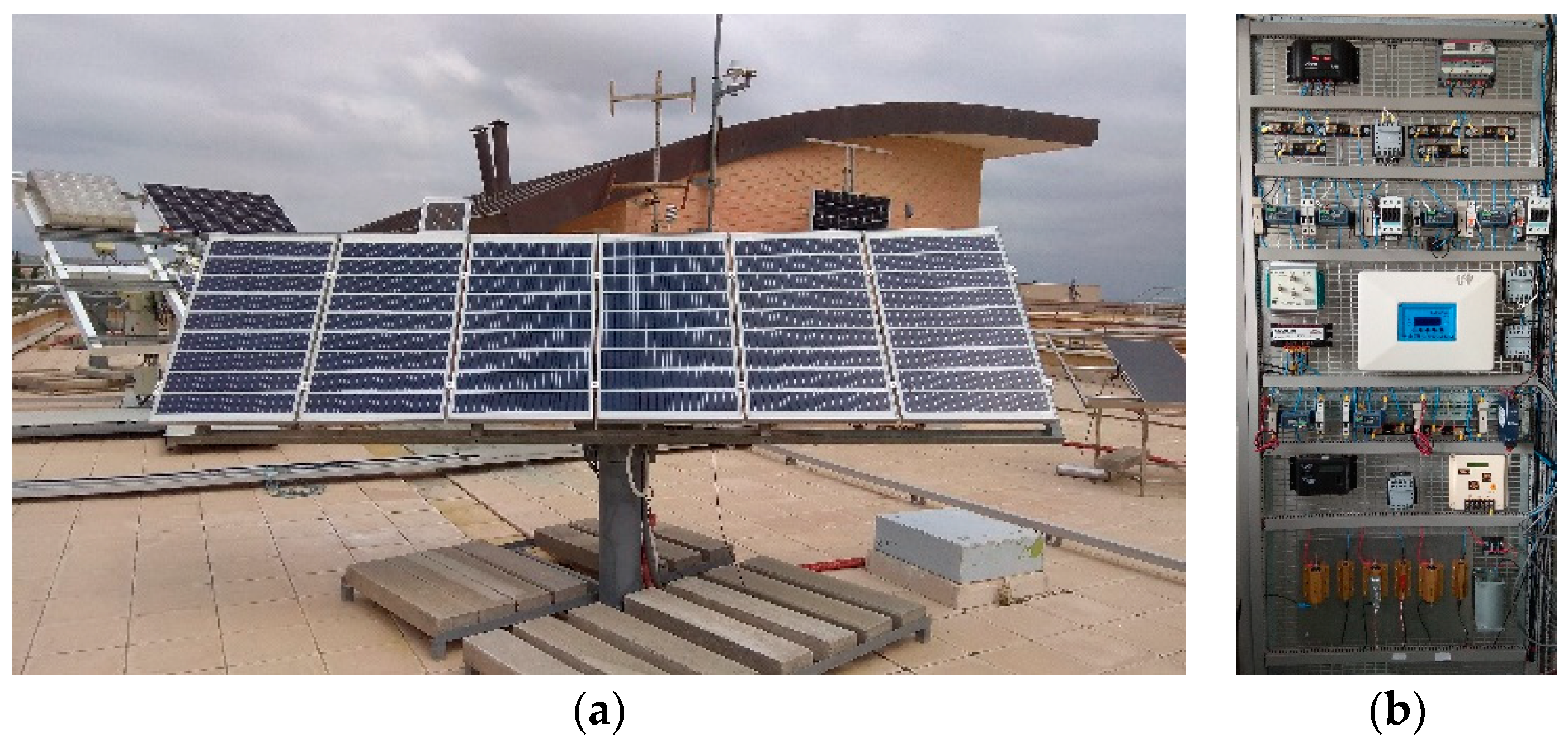
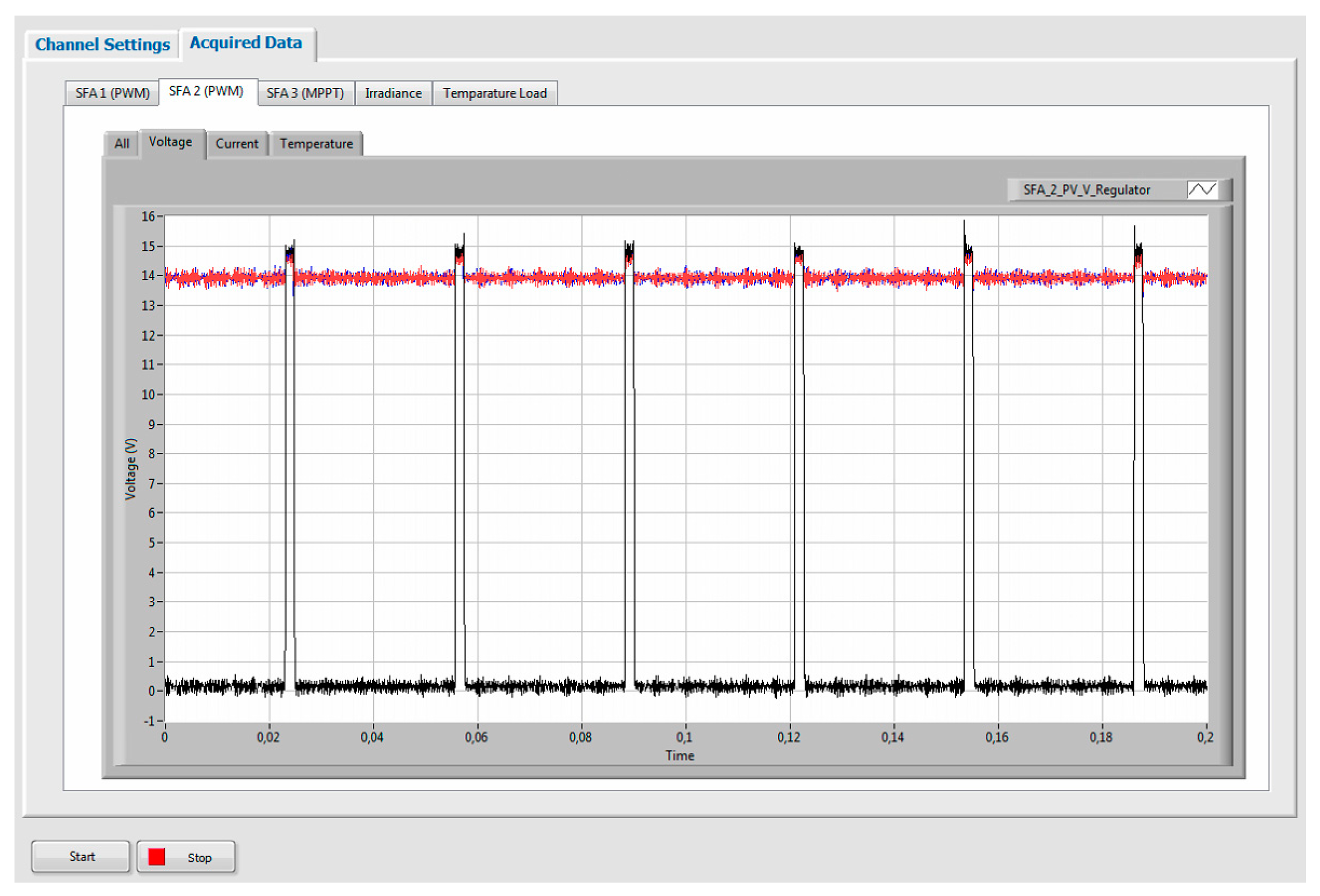


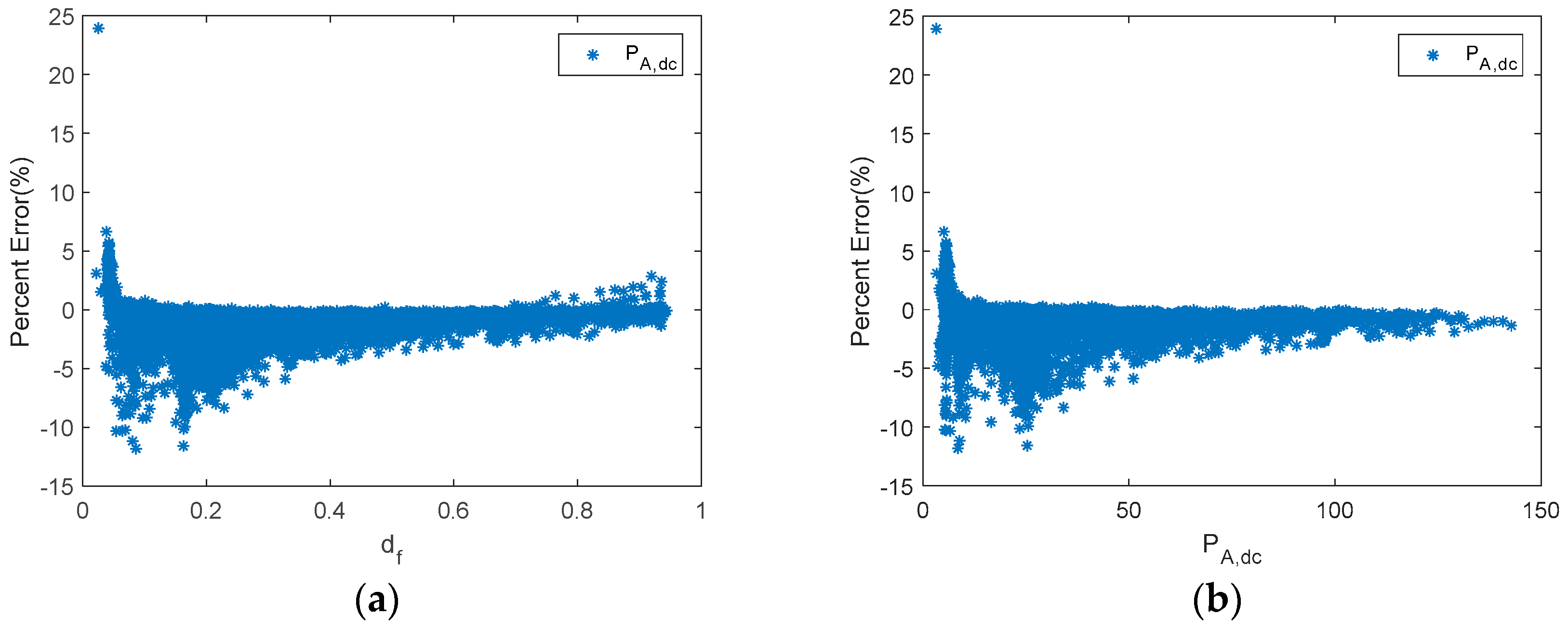
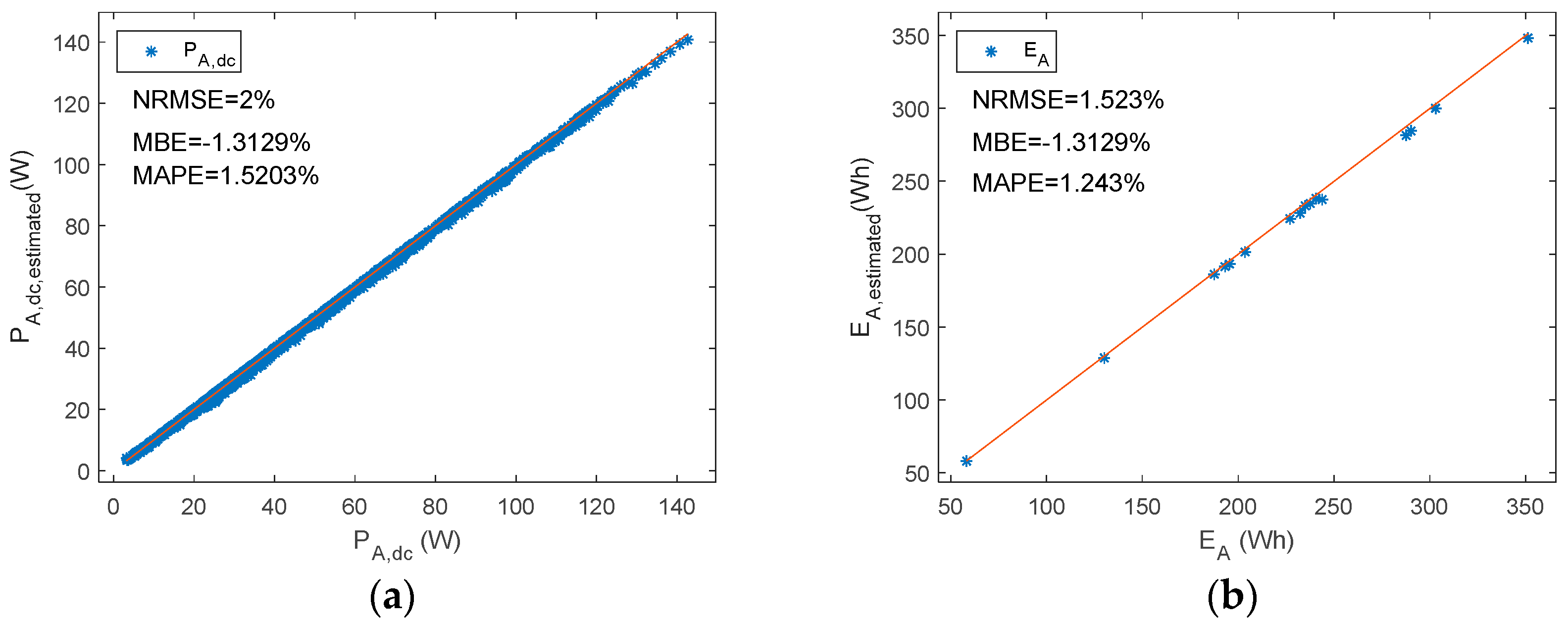

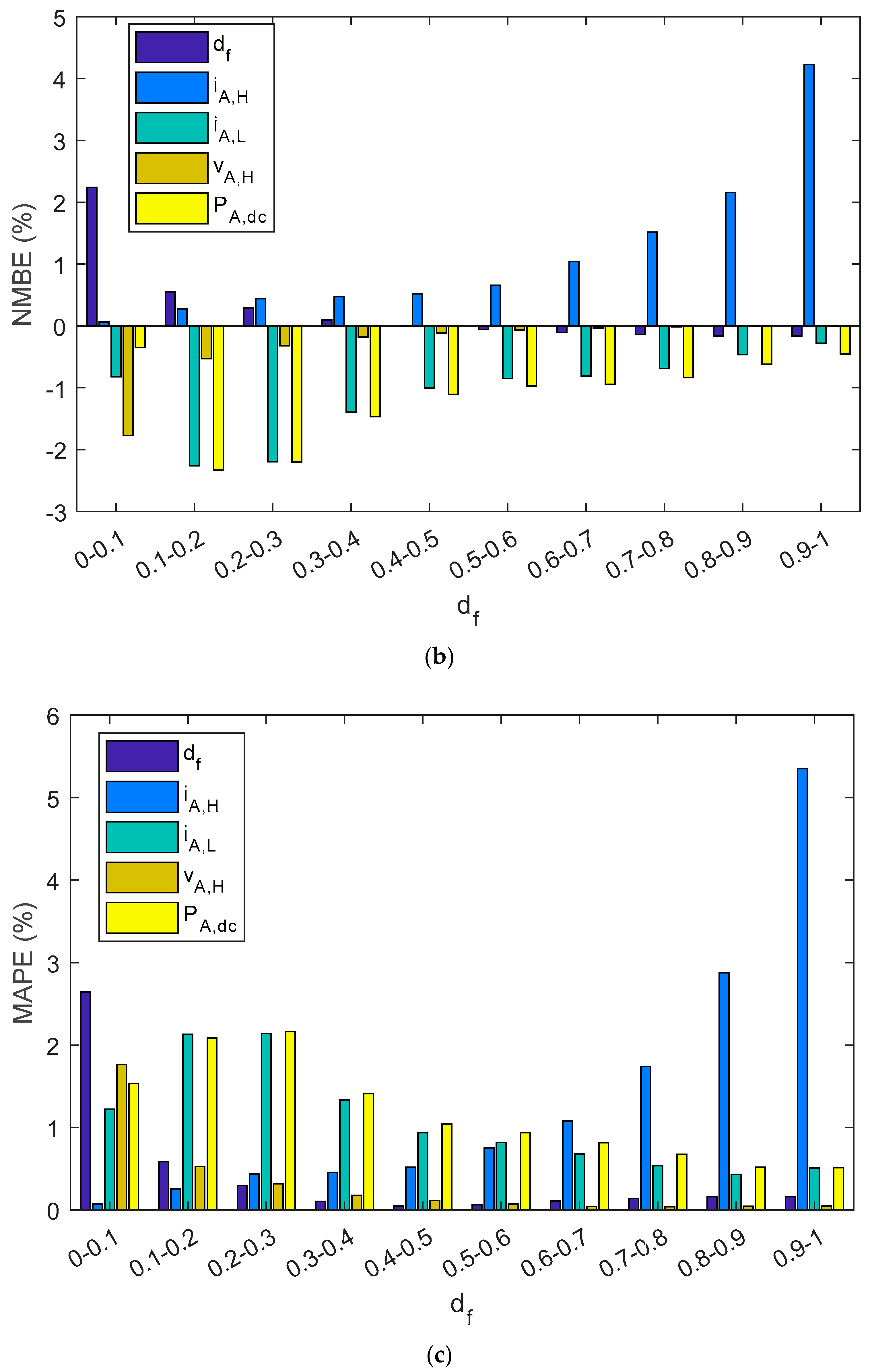
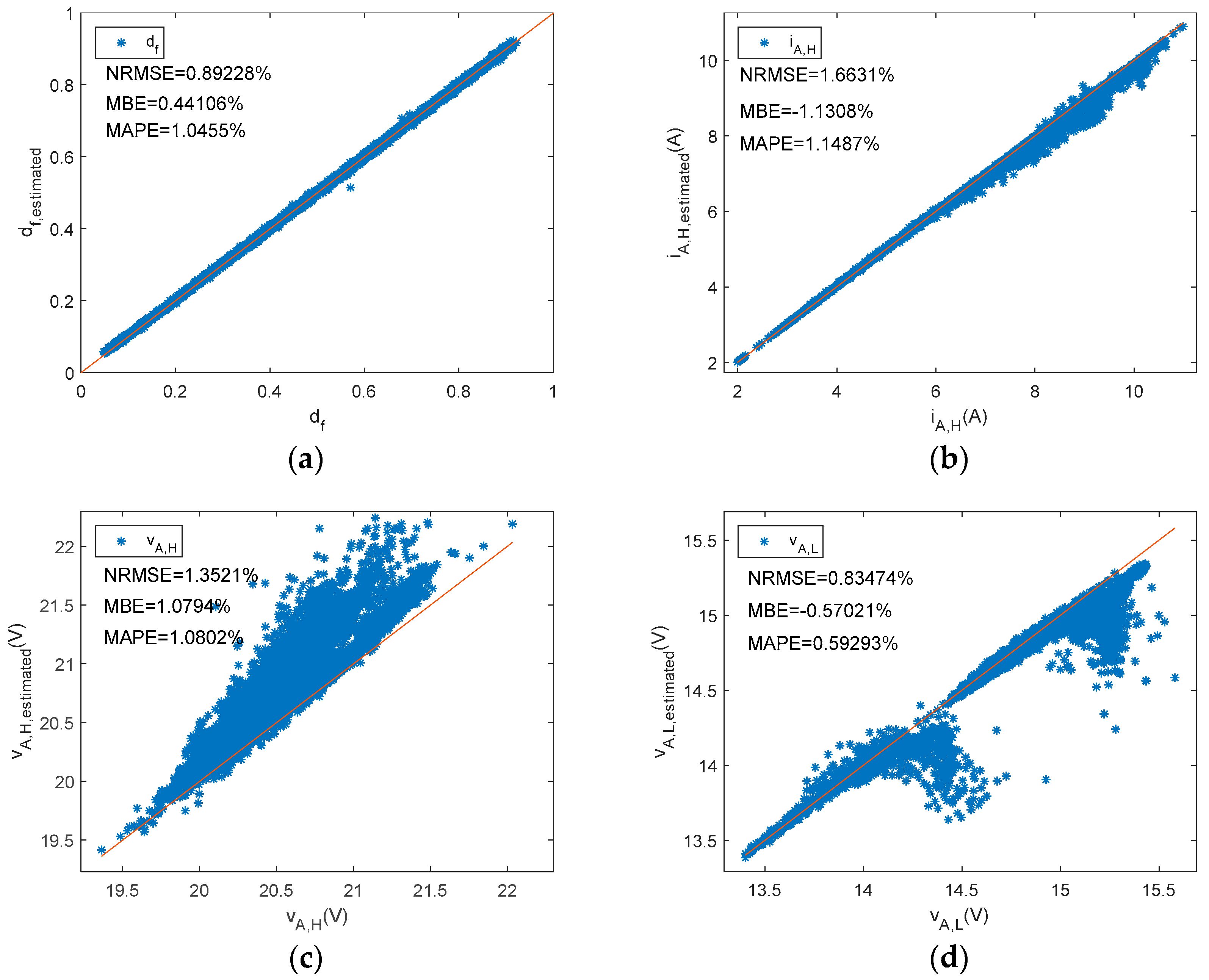

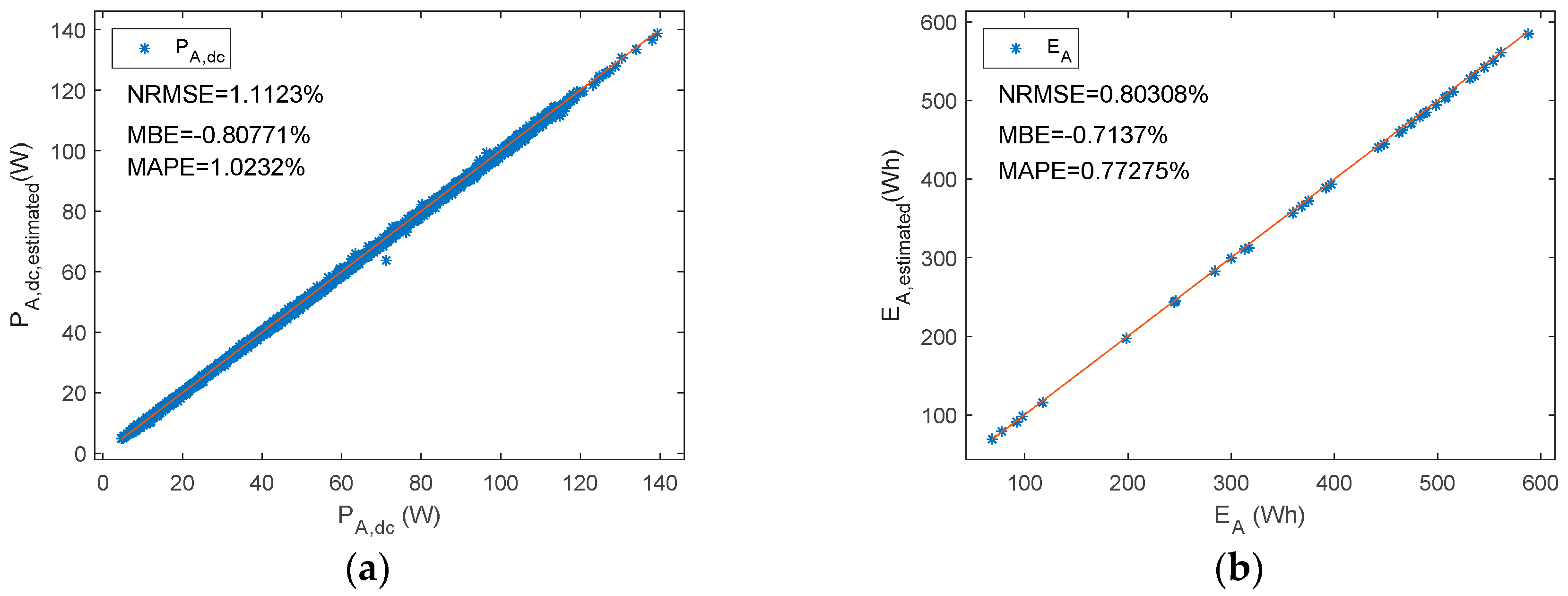

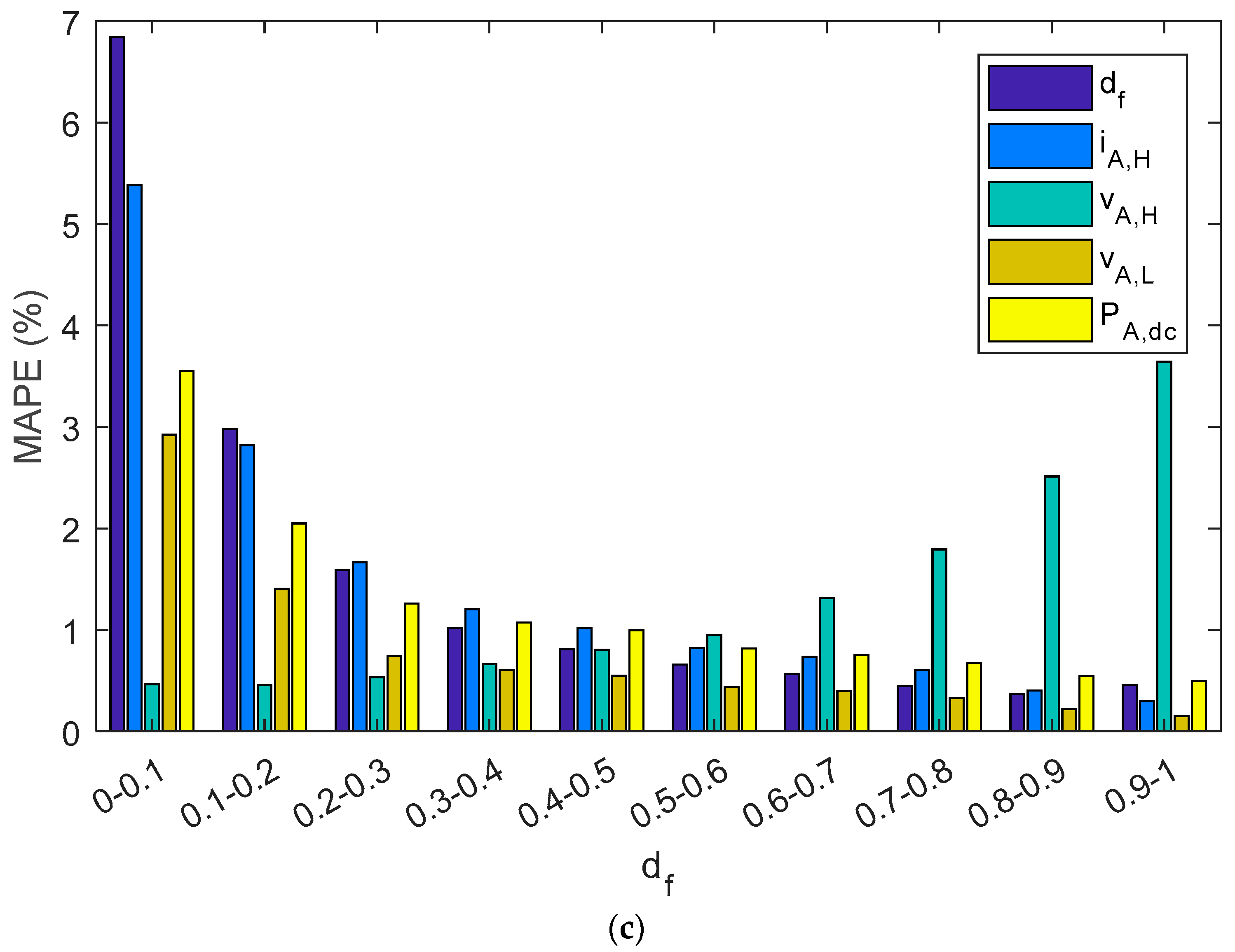
| BCC | State Level | PV Array Current | PV Array Voltage |
|---|---|---|---|
| Series | #1 | High state (iA,H) | Low state (vA,L) or open circuit voltage (VOC) |
| #2 | Low state (iA,L) | High state (vA,H) or battery voltage (VS) | |
| Shunt | #1 | Low state (iA,L) | High state (vA,H) or battery voltage (VS) |
| #2 | High state (iA,H) or short circuit current (ISC) | Low state (vA,L) |
| Ref: | Technique: | Summary |
|---|---|---|
| [53] | Power monitoring (voltage and current) | The technique only applies to shunt PWM BCCs. High errors are reported, which depend on the battery SOC. |
| [10,11,12] | Current monitoring | The techniques apply to series and shunt PWM charge controllers. It provides a proper performance analysis based on charge parameters. However, it does not permit performance comparisons with SAPV systems with MPPT charge controllers, as the latter are based on energy parameters. Array current and voltage PWM signals cannot be reconstructed. |
| [54] | Current and voltage waveforms | The technique only applies to series PWM BCCs. It provides only the four state parameters of the current and voltage waveforms. It also provides the PWM duty factor. |
| Proposed monitoring techniques | Power monitoring (voltage and current) | The technique applies to either series or shunt PWM BCC. Array current and voltage PWM signals can be reconstructed, avoiding complex and sophisticated DAQ devices. It provides the PWM duty factor. It monitors array power array (PA,dc) with a negligible error. It provides a proper analysis based on energy parameters (EA). |
| Measured and Recorded Parameters | Symbol (Unit) | Transducers and Sensor | DAS NI Module |
|---|---|---|---|
| Array current | IA (A) | Shunt (25 A, 150 mV) | NI 9229 Calibrated |
| Array output voltage | VA (V) | - |
| Parameter | NRMSE (%) | NMBE (%) | MAPE (%) |
|---|---|---|---|
| df | 0.2962 | 0.1307 | 0.6672 |
| vA,H | 0.9136 | −0.5131 | 0.5119 |
| iA,H | 0.8752 | 0.4886 | 0.5736 |
| iA,L | 2.3994 | −1.4475 | 1.4259 |
| PA,dc | 2.0000 | −1.3129 | 1.5203 |
| EA | 1.5230 | −1.3129 | 1.2430 |
| Parameter | NRMSE (%) | NMBE (%) | MAPE (%) |
|---|---|---|---|
| df | 0.8923 | 0.4411 | 1.0455 |
| iA,H | 1.6631 | −1.1308 | 1.1487 |
| vA,H | 1.3521 | 1.0794 | 1.0802 |
| vA,L | 0.8347 | −0.5702 | 0.5929 |
| PA,dc | 1.1123 | −0.8077 | 1.0232 |
| EA | 0.8031 | −0.7137 | 0.7728 |
© 2019 by the authors. Licensee MDPI, Basel, Switzerland. This article is an open access article distributed under the terms and conditions of the Creative Commons Attribution (CC BY) license (http://creativecommons.org/licenses/by/4.0/).
Share and Cite
Jiménez-Castillo, G.; Muñoz-Rodríguez, F.J.; Rus-Casas, C.; Gómez-Vidal, P. Improvements in Performance Analysis of Photovoltaic Systems: Array Power Monitoring in Pulse Width Modulation Charge Controllers. Sensors 2019, 19, 2150. https://doi.org/10.3390/s19092150
Jiménez-Castillo G, Muñoz-Rodríguez FJ, Rus-Casas C, Gómez-Vidal P. Improvements in Performance Analysis of Photovoltaic Systems: Array Power Monitoring in Pulse Width Modulation Charge Controllers. Sensors. 2019; 19(9):2150. https://doi.org/10.3390/s19092150
Chicago/Turabian StyleJiménez-Castillo, Gabino, Francisco José Muñoz-Rodríguez, Catalina Rus-Casas, and Pedro Gómez-Vidal. 2019. "Improvements in Performance Analysis of Photovoltaic Systems: Array Power Monitoring in Pulse Width Modulation Charge Controllers" Sensors 19, no. 9: 2150. https://doi.org/10.3390/s19092150
APA StyleJiménez-Castillo, G., Muñoz-Rodríguez, F. J., Rus-Casas, C., & Gómez-Vidal, P. (2019). Improvements in Performance Analysis of Photovoltaic Systems: Array Power Monitoring in Pulse Width Modulation Charge Controllers. Sensors, 19(9), 2150. https://doi.org/10.3390/s19092150








